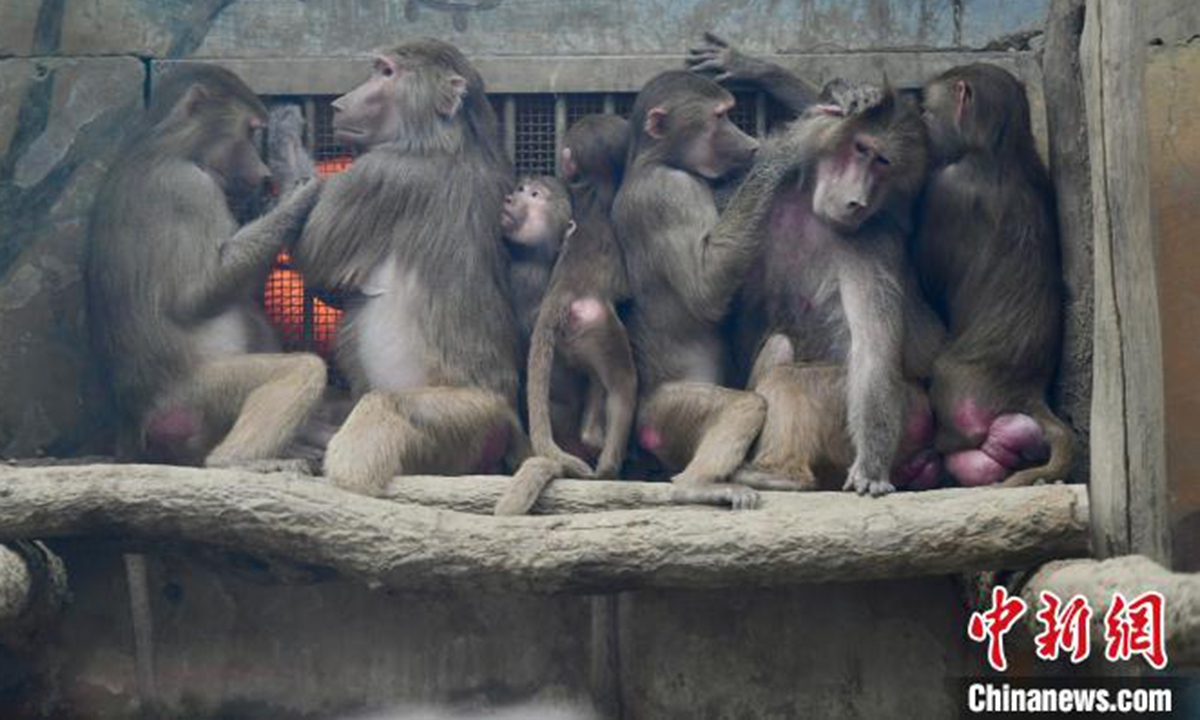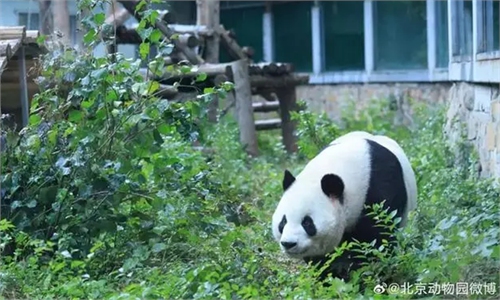
A group of baboons warm themselves around an electric heater at Chengdu Zoo in Chengdu, southwest China's Sichuan province, Dec. 24, 2019. Photo: China News Service
The Chengdu Zoo recently introduced winter heating measures to ensure the animals there remain comfortable during winter. These "winter essentials" include air heaters, electric heaters, and heated flooring, all tailored to meet the specific needs of various animal species.
The zoo adopted tailored heating strategies based on the unique needs of its residents. Primates, including chimpanzees, orangutans, squirrel monkeys, and ring-tailed lemurs, enjoy lounging and playing on heated floors. Meanwhile, larger animals like elephants and rhinos benefit from heated spaces and air conditioning to maintain a suitable temperature. In the reptile house, turtles, crocodiles, and pythons benefit from a "private hot spring" experience.
Throughout the reptile exhibit, strategically placed thermometers ensure precise monitoring of environmental temperatures. For amphibians and reptiles like snakes, lizards, and tortoises, maintaining optimal temperatures is essential, as extended cold exposure may endanger their survival. To address this, the zoo not only uses air and electric heating to establish a baseline temperature but also adds supplementary warming lamps in specific areas. This creates a temperature gradient, allowing those cold-blooded animals to bask under the lights and enjoy a cozy "sunbathing" experience.
In addition to these heating measures, the zoo has adjusted the animals' diets to help them better cope with the winter chill. This includes increasing the energy density of their food and adding more high-calorie options. The amount of food provided during the winter months is increased by 20 percent compared to regular amounts, ensuring that the animals receive the necessary energy to withstand the cold.
China News Service

